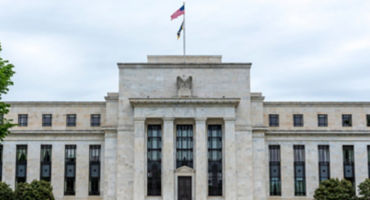- 宏觀策略師
Skip to main content
- 基金中心
- 投資實力
- 投資見解
- 關於我們
本刊所載見解反映作者於撰文時的觀點,其他團隊可能觀點各異,或會作出不同的投資決策。閣下投資的價值可能高於或低於初始投資時的水平。本刊所載第三方數據被視為可靠,惟概不保證其準確性。
宏觀策略師 Juhi Dhawan 研究了美國龐大的醫療補助計劃變化對經濟成長、就業、通貨膨脹及金融市場可能產生的影響。 (僅提供英文版)
In the coming months, I'll be sharing a series of insights on the Trump administration's efforts to downsize the government and what they could mean for the economy, industry, and markets. After examining the effects of deregulation, I turn my attention to the potential impact of changes in Medicaid, a program that has grown significantly over the years.
In 2024, 0.6% of the 2.8% growth in the US economy was a result of government spending (0.2% at the federal level and 0.4% at the state/local level). Health care, which accounts for 17.5% of the US economy, was a strong contributor to that government-driven growth. With this in mind, it's important to understand what's at stake as the Trump administration considers Medicaid changes and spending cuts, including the implications for economic growth, employment, inflation, and financial markets.
Since the passage of the American Care Act (ACA) in 2010, Medicaid enrollment has grown by nearly 35 million people, helping to reduce the uninsured population by almost 45% (Figure 1). The rise in coverage and the increased utilization by enrollees have contributed to robust growth in US health care spending recently — more than twice the rate of nominal growth in the US economy as of the third quarter of 2024.
Figure 1
Since early 2023, when the Biden administration ended the "continuous enrollment" provision that had been put in place during the pandemic, Medicaid enrollment has been under some downward pressure (as shown in Figure 1), with roughly 15 million people removed from the rolls, according to the Kaiser Family Foundation. The most recent strength in health care spending has thus come more from a pick-up in "marketplace" enrollment (state-level organizations through which health insurance can be purchased) and private insurance usage post-COVID. Still, the expansion of Medicaid has made the US government the biggest sponsor of health care expenditures (exceeding households, private businesses, and state and local governments) and, therefore, a target for possible cost cutting as the government budget deficit is in focus.
Republicans have put forward several proposals for spending reductions to help fund tax-cut extensions, and Medicaid changes appear to be on the table. It remains to be seen how far the party is willing to go, given the importance of the issue to constituents, memories of the failed effort to repeal the ACA in 2017, and the potential for a challenging midterm election down the road.
But if Medicaid cuts are enacted, there will be spillover effects on various areas of the US economy:
State budgets — The Medicaid program is administered by the states, which rely heavily on grants from the federal government to cover the cost. In fact, health-related grants account for about 60% of all transfers made by the federal government to the states. In turn, states allocate only about 15% of their own spending to health care, allowing them to spend far more on education and other needs. So, federal Medicaid cutbacks, should they pass, will force states with balanced-budget mandates to either raise taxes, cut spending on Medicaid, or cut spending elsewhere — in other words, there will be trade-offs, with implications for states' economic well-being. Of course, there is also a human angle to these difficult decisions and the resulting trade-offs when it comes to equity in health care coverage. Some states may opt to reduce benefits, for example, while others may choose to reduce the number of residents who qualify for coverage.
Employment — The surge in health care spending has brought big gains for the US labor market, with government and private health care jobs collectively accounting for roughly two-thirds of the gains in each of the last two years (Figure 2). These gains helped support labor incomes and carried the US economy during a period in which parts of the private sector struggled. If health care jobs slow meaningfully at a time when government is also cutting back elsewhere, it could weigh on the broader economy and contribute to a downturn unless the private sector picks up the slack.
Figure 2
Inflation — A distinct feature of the last decade has been less upward pressure on health care prices relative to the broader inflation rate. This is a result of efforts in the health care sector to cut costs, focus on outcomes, and take more of a value approach, and it has helped to restrain inflation more broadly, as shown in Figure 3. Notably, despite an aging population, the share of health care in the US economy has been roughly stable over the past 15 years (excluding the COVID surge). Of course, the cost of health care in the US far outstrips global peers and the need to narrow this difference will only grow over time as the demographic pressures on health care rise and add to the cost of Medicare and Medicaid, which together account for more than a quarter of government outlays.
Figure 3
I expect a protracted political process. Currently, my base case is that the Republicans will eventually push through some of the spending cuts described in the current proposals but not all of them. Given the party's slim majorities in Congress, it will be difficult to drum up the support needed to make the more drastic changes in Medicaid being considered. It is also the case that the recent Medicaid expansion discussed earlier has benefited many Republican states, making some of the proposals controversial even within the president's own party. I would note too that the final budget outcome may depend to some extent, as it often does, on the overall condition of the economy when lawmakers are preparing to vote.
Financial markets are increasingly focused on the size of the US budget deficit, with bond investors beginning to demand a higher term premium to own longer-term US Treasuries. Modest Medicaid cutbacks would allow the Republican party to extend expiring tax cuts but also demonstrate an ability to curb spending. On the other hand, failure to achieve some spending control (whether in Medicaid or other areas) would damage US creditworthiness, while severe spending cuts would risk an economic downturn. Health care's impact on both employment and prices (Figures 2 and 3) also means that the Federal Reserve will be watching these developments closely as it determines its future course of action.
From an equity market perspective, it is worth noting that the health care sector's equity earnings are far outpacing the sector's market-cap contribution (Figure 4). Successful resolution of some of these spending and budget deficit issues may serve to lift the overhang on this sector.
Figure 4
Looking out over the medium term, health care is likely to remain a contentious area in US politics given its growing role in the US deficit and the country's demographic pressures, which will continue to drive strong demand. Efficiency gains and innovation that improves productivity in a traditionally labor-intensive sector will increasingly matter for sector profitability under this heightened scrutiny.

投資專家快問快答:Ross Dilkes
在本期《快問快答》系列短片中,我們邀請固定收益投資組合經理Ross Dilkes分享其對亞洲信貸債券市場的觀點,涵蓋宏觀經濟前景、中國市場動力、區內最吸引的機會,以及影響未來12個月市況的主要風險。

投資專家快問快答:Tim Manning
在本期《投資專家快問快答》系列短片中,股票投資組合經理Tim Manning解析美股五大投資關鍵:聯儲局減息、財政刺激措施、關稅戰、人工智能及美股跨行業投資機遇。

焦點圖解:長期收益率上升有何啟示?
市場對結構性增長及財政擴張政策的憂慮帶動長期收益率攀升。在本期「焦點圖解」,我們探討收益率曲線的變化如何重塑不同資產類別的投資機會。

焦點圖解: 聯儲局重啟減息—投資者該如何部署?
本期「焦點圖解」探討聯儲局在策略性按兵不動後重啟減息的情況。我們剖析此舉以及各國央行的分化路徑如何影響風險資產的前景。



中國正在轉變:為何不容忽視
宏觀策略師Johnny Yu探討中國的結構性轉變如何影響環球投資格局,尤其是房地產業的重要性減弱及進口急跌。

焦點圖解:估值上升是否合理?
自「解放日」以來,關稅前景開始轉趨明朗,市場亦隨之揚升。在本期《焦點圖解》,我們重新審視各個資產類別的估值水平,並探討估值上升是否合理。

焦點圖解:美元疲弱,對環球投資者有何啟示?
在本期「焦點圖解」,我們展示與過去五十多年比較,美元在2025年的影響力。了解我們的關注焦點,以及美元走弱對環球投資的影響。

投資專家快問快答:股票策略師Philip Brooks (第二部分)
在本期《投資專家快問快答》系列短片中,股票策略師Philip Brooks解構三大關鍵問題,聚焦股票質素對股價表現的影響,及美國國內外的投資機遇。

投資專家快問快答:股票策略師Philip Brooks (第一部分)
在本期《投資專家快問快答》系列短片中,我們請來股票策略師Philip Brooks就股票市場展望及風險解構三大關鍵問題。
參考網站連結
相關投資見解
重要披露
在未有威靈頓投資管理明確書面批准的情況下,概不可複製或轉載本刊全部或任何部分內容。本文件僅供參考之用,並非任何人士要約或邀請認購威靈頓投資管理(盧森堡)SICAV基金III系列的股份。本文件所載資料不應被視為投資建議,亦非買賣任何股份之推介。基金投資不一定適合所有投資者。所載見解反映作者於撰文時的觀點,可予更改而不作另行通知。投資者於作出投資決定前,務請細閱基金及子基金的產品資料概要、基金招股章程及香港說明文件,以了解詳情(包括風險因素),其他有關文件包括年度及半年度財務報告。
© 2025 Morningstar, Inc。版權所有。本刊所載資訊:(1) 為晨星(Morningstar)專有;(2) 不得複製或分發;及(3) 概不保證屬準確、完整或及時。晨星及其內容提供者概不就使用相關資訊所引致的任何損害或損失負責。基金的Morningstar綜合星號評級(Overall Morningstar Rating)乃基於經風險調整回報,按三年、五年及十年(倘適用)評級的加權平均得出。過去業績並非將來表現的保證。
由威靈頓管理香港有限公司刊發。投資涉及風險。過去業績並不代表將來表現。本文件未經香港證券及期貨事務監察委員會審閱。